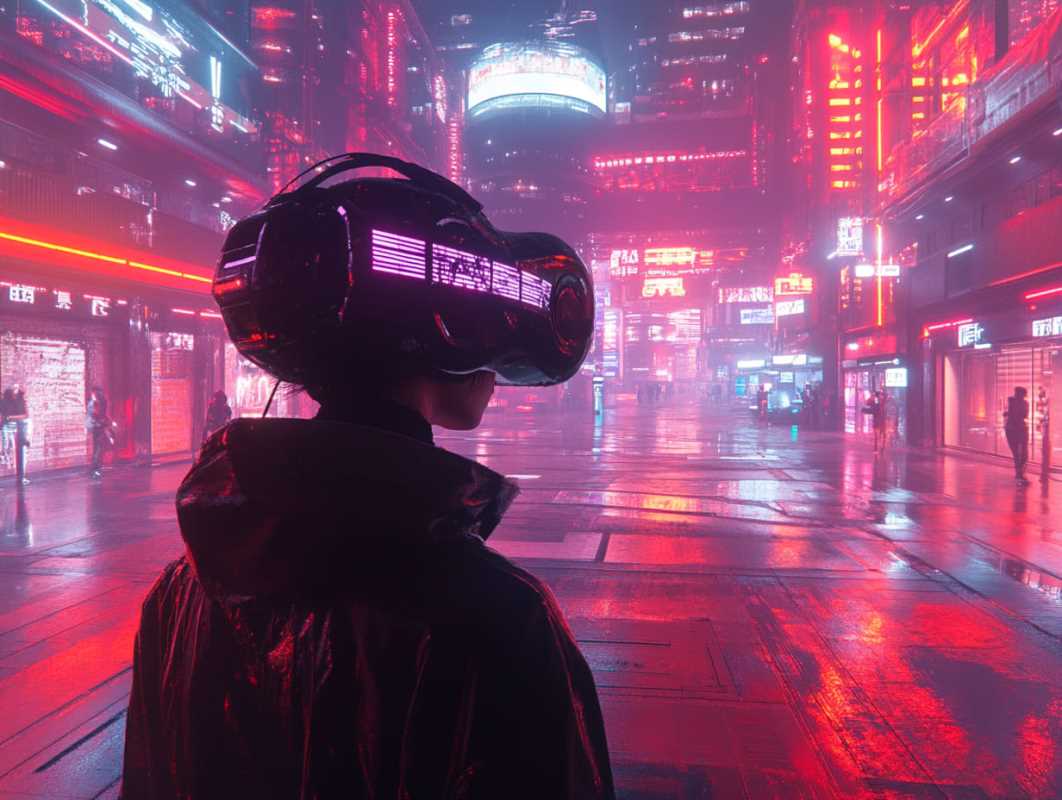Virtual Reality (VR) is no longer just the stuff of sci-fi movies or gaming escapades; it has found its way into modern business practices — revolutionizing everything from product design to customer experiences. One of the most impressive areas VR is reshaping is employee training programs. Imagine putting on a headset and finding yourself in a fully immersive learning environment tailored to real-life challenges, without any risk of making costly mistakes. That’s the power of VR in training.
The traditional training methods of lectures, slideshows, and textbook learning are becoming outdated, replaced by dynamic, engaging, and interactive VR experiences. These programs allow employees to experience scenarios and learn in a way that is far more hands-on and memorable, without the downsides of trial-and-error learning in the workplace. From manufacturing workers learning machinery operation to medical professionals practicing surgeries, VR sets a new professional development standard.
So, how is Virtual Reality making waves in training programs, and why is it proving so effective? Let’s explore the multifaceted ways VR is shaping modern workforce development.
Immersive Learning Through Real-Life Scenarios
One of the most exciting aspects of VR in employee training is its ability to create immersive, real-world experiences in a controlled and safe virtual environment. Employees can find themselves in complex, high-pressure situations that mimic the challenges of their jobs without real-world consequences. This hands-on learning allows employees to practice skills, solve problems, and make decisions in environments that feel as real as the actual workplace.
For example, construction workers can train on heavy machinery, medical students can perform complex surgical procedures, and airline pilots can experience flight simulations — without risking lives or costly equipment. These scenarios are repeatable, scalable, and can be customized to reflect a wide variety of situations that employees might encounter. This makes VR training ideal for high-tech industries, such as healthcare, aerospace, and manufacturing.
The sense of presence and engagement in VR creates an unforgettable learning experience. Employees aren’t just watching a video or reading about a procedure; they’re actively participating in it. That active engagement allows for better retention of information and improved confidence when transitioning to real-life tasks.
When employees are placed in a VR simulation that mirrors their actual job duties, they come away with experience they can draw upon when faced with real challenges. It’s practical learning at its finest, blending theory and action seamlessly and risk-free.
Learning Without the Risk of Real-World Consequences
The risk factor is one of the most significant barriers to traditional hands-on training, particularly in industries like healthcare, aviation, or heavy machinery operation. VR eliminates this issue entirely by allowing employees to make mistakes and learn from them without endangering lives, equipment, or company resources.
Think about it: no company wants a new employee to cause a machinery breakdown or medical error accidentally. With VR, employees can learn by trial and error within a virtual environment, helping them build confidence and skills without real-world risks. They can explore, fail, practice, and refine their skills repeatedly until they feel fully prepared for the real world.
This risk-free training approach reduces injuries, costs, and better-prepared employees. It allows workers to tackle situations from multiple angles, experiment with different strategies, and learn at their own pace — all without the fear of costly consequences. This is especially important for industries with dangerous conditions, like construction, transportation, and healthcare.
By prioritizing safety while providing hands-on learning, VR ensures that employees can take the lessons learned in their simulations and translate them confidently into real-world success.
Increasing Engagement and Retention
Let’s face it — traditional training methods can be boring. Most employees would rather learn through an interactive experience than sit through a series of slides and lectures. This is another area where VR excels. With its engaging visuals, dynamic simulations, and interactive tasks, VR captures attention in a way that traditional training formats struggle to match.
Studies have shown that employees retain more information when they actively engage with material as opposed to passively listening or reading. VR promotes this kind of active learning by immersing employees in their training. They’re not just absorbing information — they’re applying it in real-time, experimenting, and solving problems. This leads to higher information retention rates and better job performance down the line.
The interactive, gamified nature of VR also appeals to younger generations entering the workforce. Millennials and Gen Z employees, who have grown up with immersive technology, find VR training intuitive and motivating. This means that VR training isn’t just effective — it’s also meeting employees where they are technologically and emotionally.
Additionally, VR removes the distractions of traditional learning methods, allowing trainees to focus entirely on the task at hand. The immersive nature of VR reduces outside interference, making it easier for employees to concentrate on mastering a new skill.
Customizable and Scalable Training Solutions
One of the biggest challenges in traditional employee training is the need to adapt to diverse learning needs across industries and skill levels. Fortunately, VR is highly customizable, allowing organizations to create tailored learning experiences for their employees. Whether you’re training new hires in entry-level roles or providing advanced learning for experienced professionals, VR training modules can be adjusted to meet specific needs and goals.
VR programs can simulate various situations, from beginner scenarios to advanced problem-solving tasks, catering to the unique experience level of each individual. This flexibility ensures employees are challenged appropriately, promoting continuous growth and development without overwhelming them or leaving them underprepared.
Moreover, VR training is incredibly scalable. Once a simulation is developed, it can be used to train hundreds or thousands of employees with the same level of effectiveness. This allows companies to reduce the time and cost associated with traditional training methods, like hiring instructors or hosting large workshops.
Virtual Reality ensures that companies can scale their training programs without compromising quality. Employees can train at their own pace, on their own schedules, and within their own skill gaps — all while maintaining the same standard of learning.
Preparing Employees for the Future of Work
The modern workplace is constantly evolving. Technological advancements, shifting market conditions, and the rise of remote work are all shaping how companies prepare their employees. VR is a powerful tool in ensuring that workers are equipped for current and future challenges.
By integrating VR into employee training programs, companies can ensure their workforce is ready to handle technological shifts, learn new processes, or adapt to unforeseen challenges. Employees can train with cutting-edge technology and experience digital transformations first-hand, preparing them for the real-world changes that are shaping industries today.
VR training also fosters cross-industry adaptability. Employees trained in VR can learn a variety of skills in different simulated environments, which helps them remain flexible and employable as industries shift and job requirements evolve. This adaptability is crucial for both employee growth and organizational resilience.
The use of VR for employee training isn’t just a trend — it represents the shift toward a smarter, more interactive, and personalized approach to learning. It equips employees to embrace technological disruption, solve problems creatively, and build long-term organizational success.
The Future is Virtual
Virtual Reality is no longer just a "cool feature" or optional learning tool. It’s becoming an essential part of how modern companies approach training, employee engagement, and workforce development. VR offers immersive, hands-on, risk-free, and engaging learning opportunities that traditional training programs simply can’t replicate. From healthcare to manufacturing, from pilots to medical practitioners, VR is proving its value by improving outcomes, enhancing engagement, and preparing employees for real-world challenges in real time.
Organizations that adopt VR in their training strategies are setting themselves up for success. Not only does VR save time and money, but it also ensures a safer, more efficient, and enjoyable learning experience. As industries evolve, companies that prioritize innovative learning solutions like VR will find themselves ahead of the curve.
The modern workforce thrives on innovation, adaptability, and engagement — and VR combines all three. From reducing risk to increasing skill retention and employee confidence, the impact of Virtual Reality on employee training programs is profound, practical, and here to stay. If you haven’t explored how VR can support your training efforts, now is the time to embrace the future of employee learning.
 (Image source: Midjourney)
(Image source: Midjourney) 





